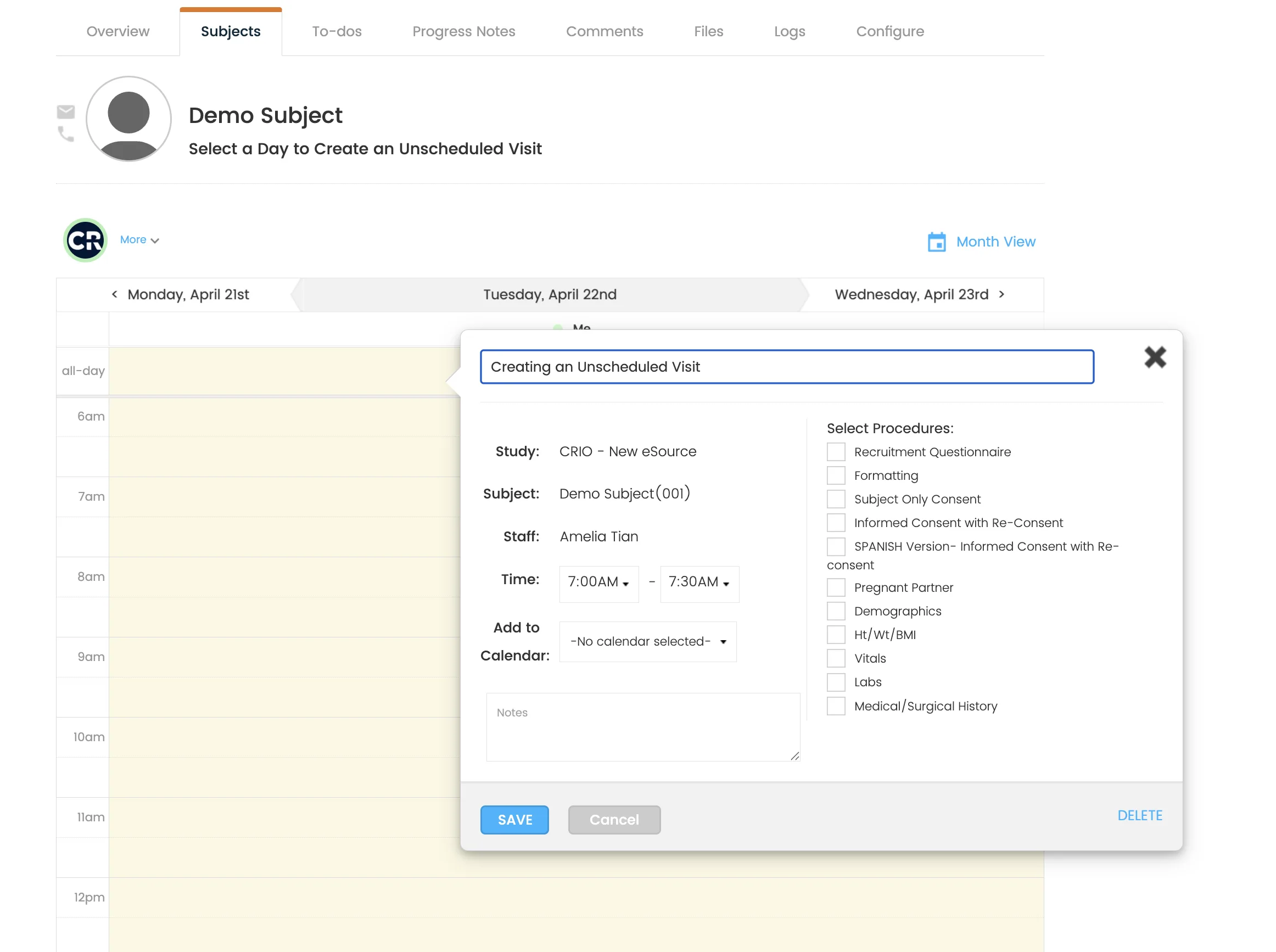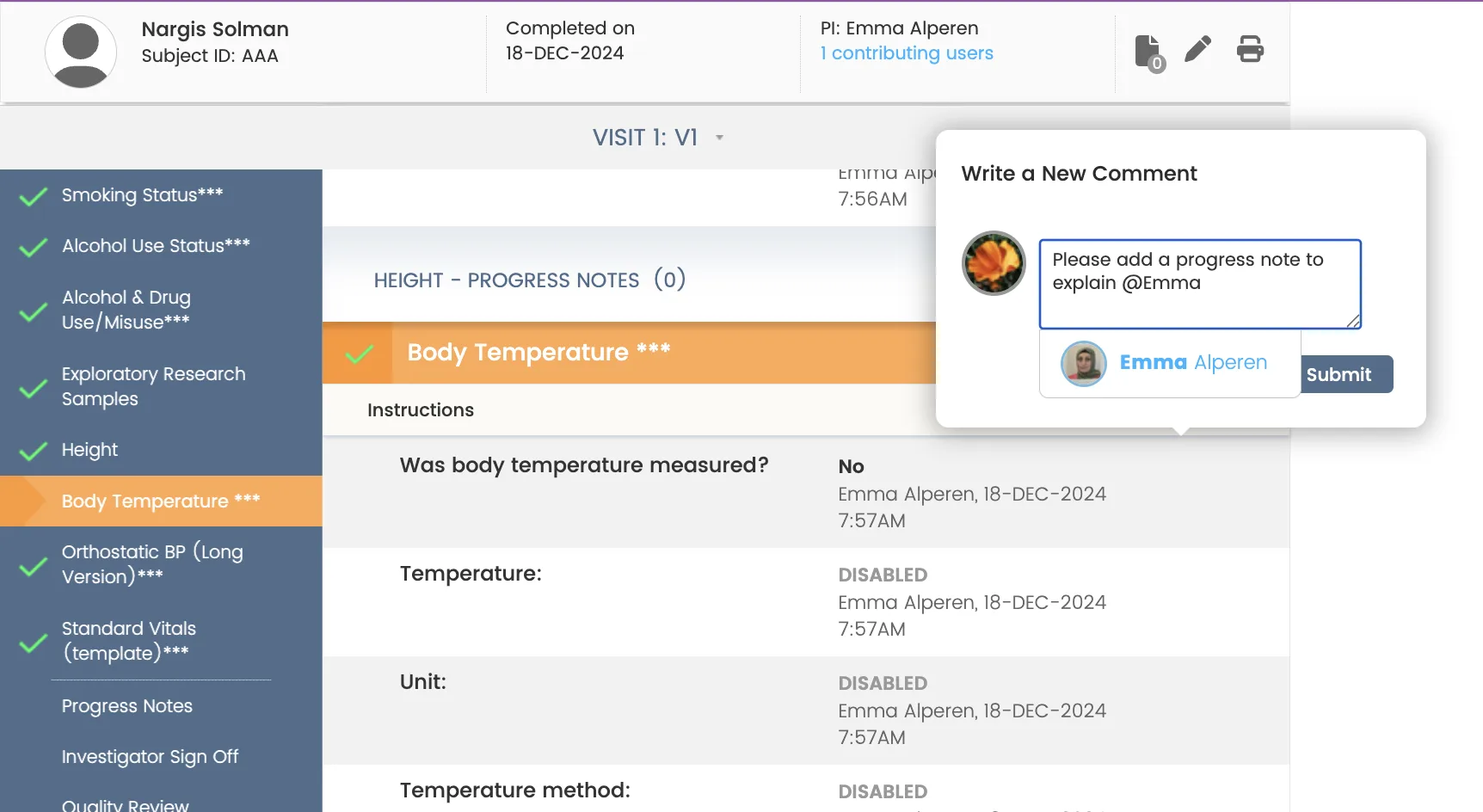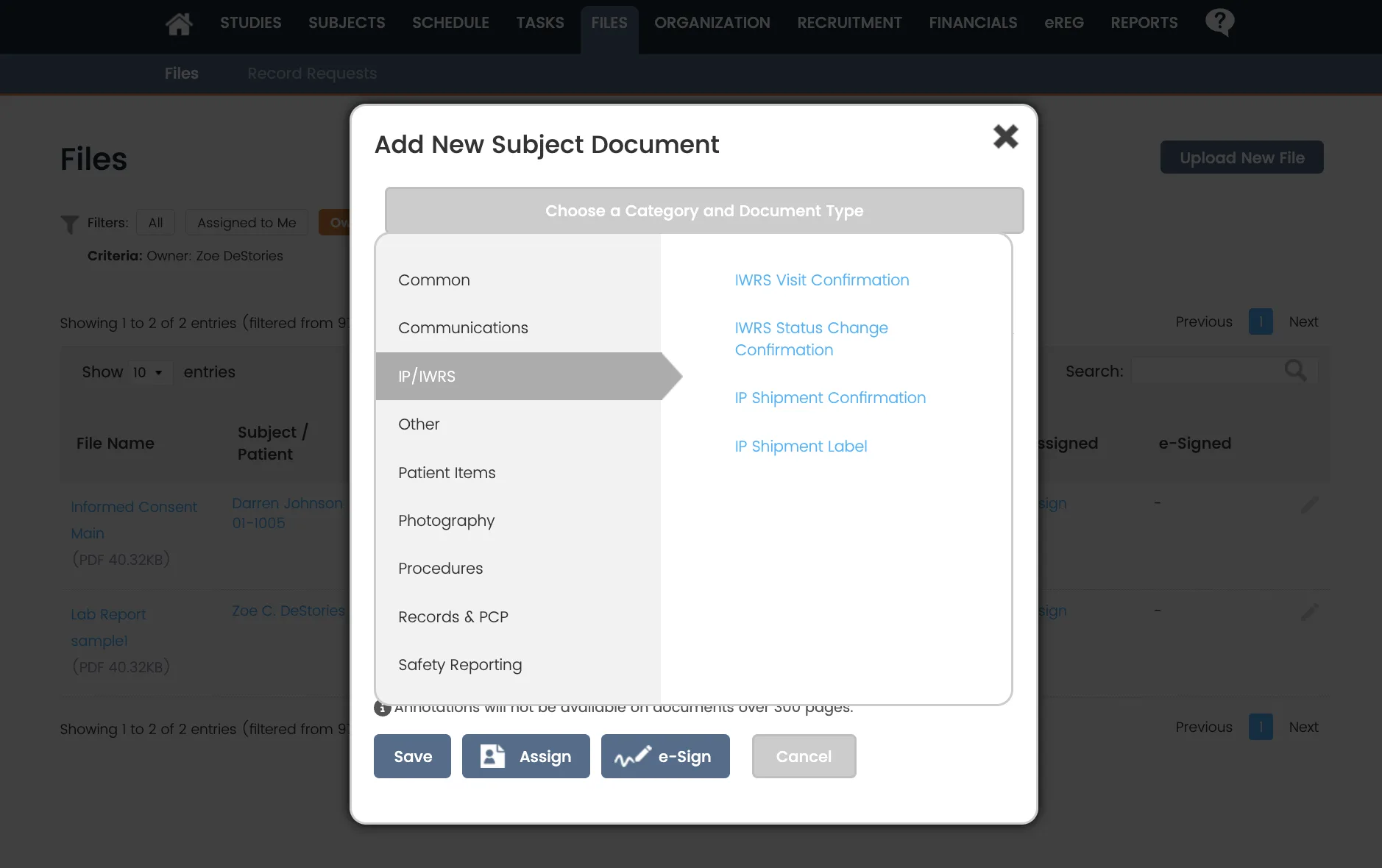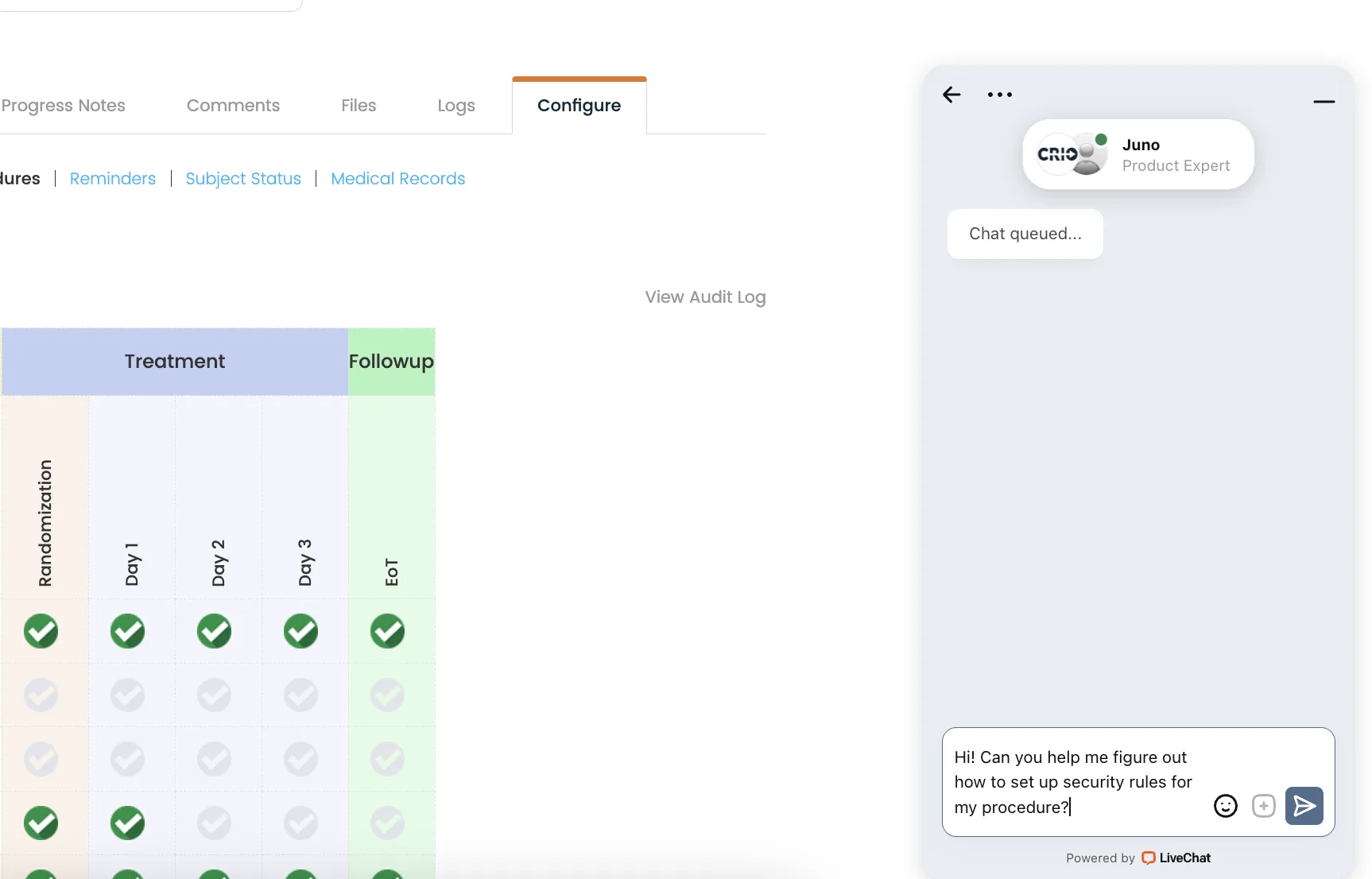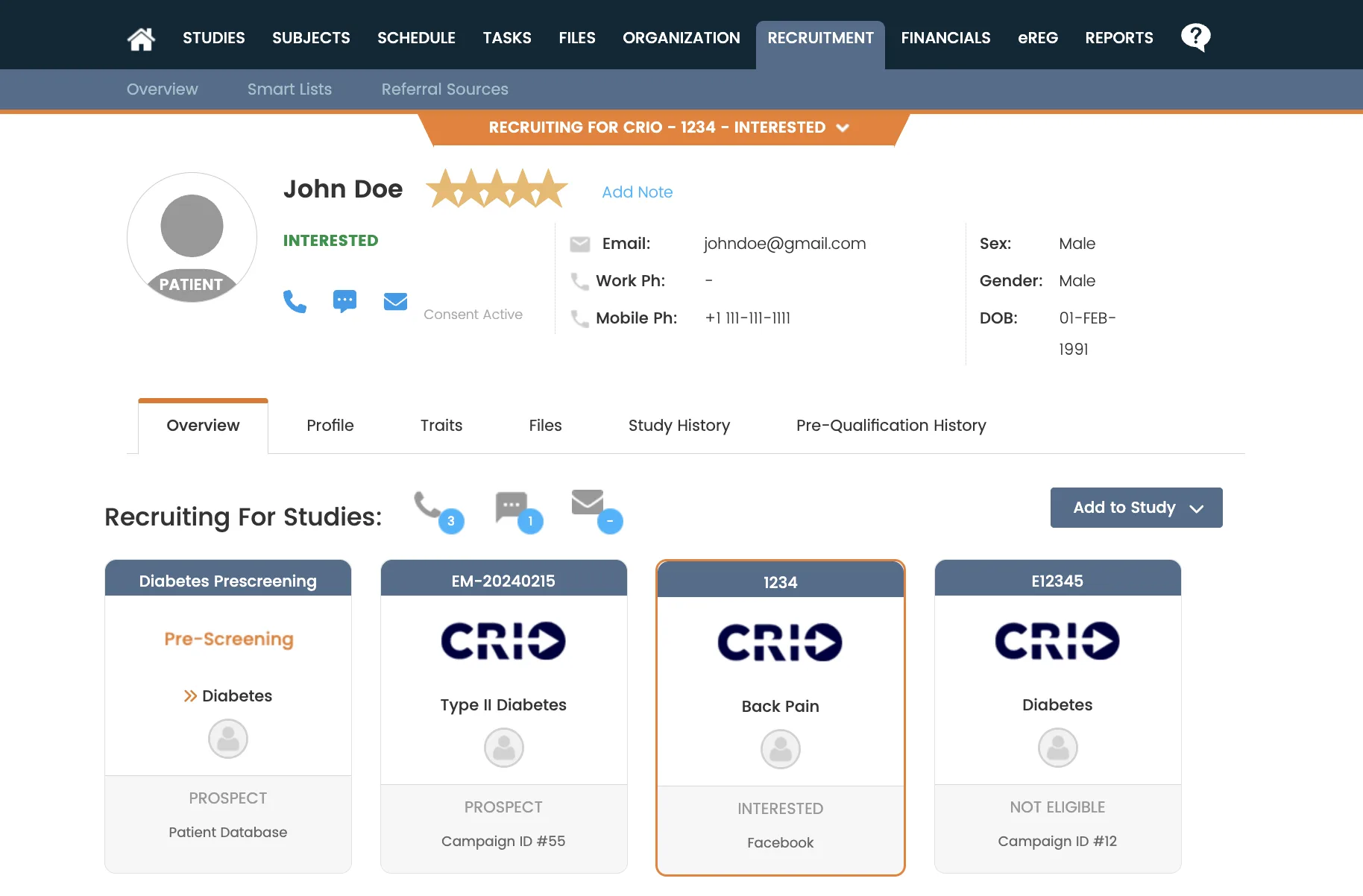The #1 eSource Technology for Clinical Trial Sites, Networks, and Academic Medical Centers
You need to capture clinical data quickly and accurately, but, from confusing software and multiple platforms to complex protocols and cumbersome paper processes, there’s a seemingly endless list of challenges standing in your way. But there doesn’t have to be. The user-friendly, scalable eSource software that makes data quality easy is clearly CRIO.

CRIO’s eSource Software vs. Everyone Else
Without CRIO
Manual, paper-based processes create opportunities for errors and protocol deviations
Varied templates and delayed monitoring allow for incorrect protocol interpretations and mistakes
Disconnected systems require extra work to track delegation, compliance, and payments
With CRIO
Digital data capture ensures accuracy and standardization
Automated logic checks and real-time alerts reduce errors at the point of entry
Seamless integration with eDOA, eRegulatory, and financial tracking make a complete site solution
Got a question about how eSource can help your site perform better?
eSource Platform Features
CRIO is the only eSource system designed for sites by a site, with carefully chosen features honed over the years from user feedback.
Intuitive eSource Templates
Save time on visits with templates built to enter source data on the go.
User-Friendly Calendar
Easily schedule subject visits within the visit window and keep track of visits scheduled or completed outside of the visit window.
Remote Collaboration
CRIO site users with study rights can log in anytime to view completed source data — including the question, answer, and audit trail — and to collaborate internally through direct message querying.
Electronic Document Management
Quickly upload, annotate, redact, route, and e-sign documents such as lab reports, electrocardiogram tracings, or patient diaries. View files assigned for signature and get alerts when the principal investigator signs a requested file.
Customer Service
Onboard and train new staff with CRIO’s high-support site enablement team.
Troubleshoot and answer questions with our dedicated customer service team and 24/7 live chat.
Integrated eSource Software
Our software is integrated with our clinical trial management system (CTMS), creating one end-to-end technology platform with impressive workflow benefits.

